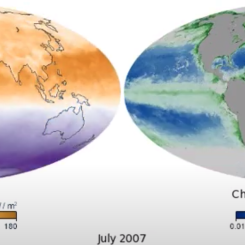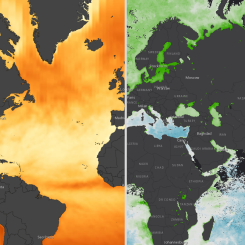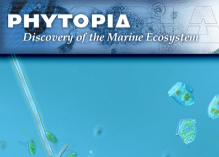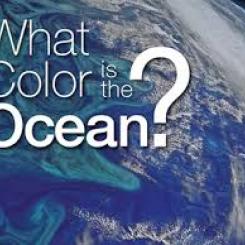Mini Lesson/Activity
Analyzing Historic Ocean Chlorophyll Concentration Data with Maps
Overview
Students will analyze the mapped plot of the historic Ocean Chlorophyll Concentrations at key locations around the world for the period of 1998-2018 and answer the following questions.
Student Directions
Phytoplankton are microscopic, floating, plant-like organisms that live in oceans, lakes, and rivers. They use photosynthetic pigments (like chlorophyll) to convert energy from the Sun into organic matter. For this reason, NASA satellites can observe the amount of phytoplankton in the ocean by measuring chlorophyll concentrations.
Review the map of Ocean Chlorophyll Concentrations at key locations around the world from 1998 to 2018.
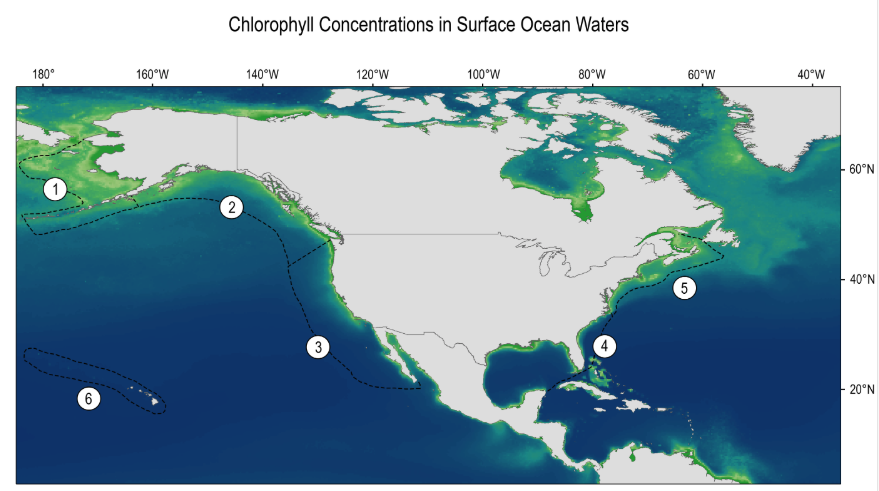

Steps:
- Check with your instructor on how to submit your answers.
- Identify what living organisms may be observed using chlorophyll data.
- Review the color bar scale below the map. What do the different colors mean with respect to phytoplankton?
- Identify each region using the numbers listed on the map.
- Analyze the Chlorophyll Concentrations in Surface Ocean Waters image at each region you listed.
- Compare the Chlorophyll Concentrations in the coastal areas to the open ocean. What do you observe?
- How do the lower latitudes like those in Florida or Hawaii compare to the higher latitudes like those in Alaska?
- Compare the West Coast and East Coast concentrations.
Note:
NASA satellites measure large areas of the world's ocean and have the ability to make these observations frequently, which is useful for evaluating long-term changes. One limitation to be made aware of is the trade-off of being only able to measure chlorophyll concentrations near the ocean's surface. This could potentially underestimate the total amount of phytoplankton found in all water depths.
Source:
- USGCRP Indicator Details. (n.d.). USGCRP Indicator Details | GlobalChange.gov. Retrieved July 13, 2022, from https://www.globalchange.gov/browse/indicators/ocean-chlorophyll-concen…
Teacher Note
Teachers, these mini lessons/student activities are perfect "warm up" tasks that can be used as a hook, bell ringer, exit slip, etc. They take less than a class period to complete. Learn more on the "My NASA Data What are Mini Lessons?" page.
Teachers who are interested in receiving the answer key, please complete the Teacher Key Request and Verification Form. We verify that requestors are teachers prior to sending access to the answer keys as we’ve had many students try to pass as teachers to gain access.
Disciplinary Core Ideas:
- LS2B: Cycles of Matter and Energy Transfer in Ecosystems
- ESS2A: Earth Materials and Systems
Crosscutting Concepts:
- Patterns
- Scale, Proportion, and Quantity
- Structure and Function
Science and Engineering Practices:
- Analyzing and Interpreting Data

